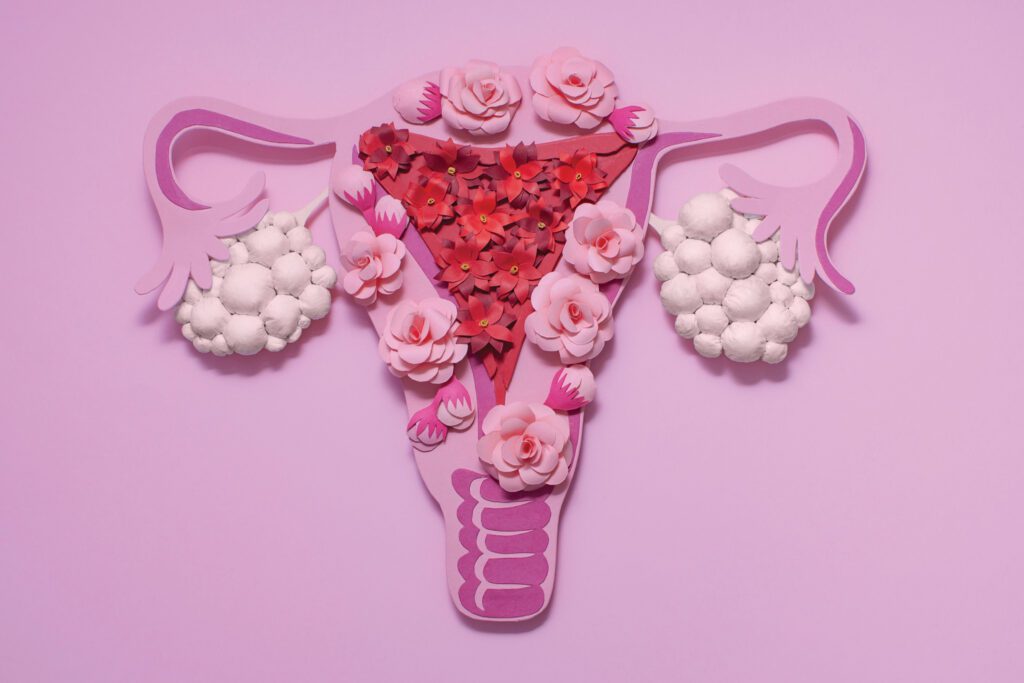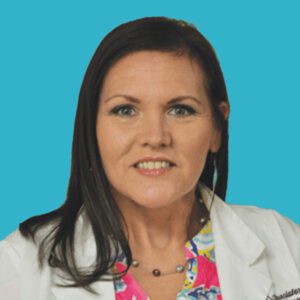These relatively unknown female disorders often go undiagnosed. But it’s time to put an end to the suffering. Period.
Women are strong and powerful. Sometimes so much so, they ignore (or may not even have) the slew of symptoms and signs that suggest they might have a common reproductive system disorder that can affect fertility, among other things. Unique to women’s anatomies, polycystic ovarian syndrome (PCOS) and endometriosis often go undiagnosed because many afflicted women assume their symptoms are variations of a normal menstrual cycle.
Just because the conditions may be undiagnosed, doesn’t mean women are not suffering. Experts estimate around 10% of women within childbearing age (ages 15-44) are affected by endometriosis, and 5-10% are dealing with PCOS.
Although any woman within childbearing years can develop either disorder, research shows endometriosis is more commonly diagnosed in women in their 30s and 40s, while PCOS often presents while a woman is in her 20s. Read on to learn the differences, the similarities, and when it’s time to visit your doctor.

The diagnosis of PCOS can be challenging, because it takes many different forms. Some women have all the classic symptoms, while others do not fit the traditional description of the condition."
Dr. Jessica Scotchie
What is PCOS?
Polycystic ovarian syndrome is a hormone disorder in which ovaries produce too many male hormones, called androgens, which affects ovulation and progesterone production. When first discovered in 1935, it was thought all women with PCOS developed cysts, or fluid-filled sacs, on their ovaries, hence the name. Since then, doctors have learned ovarian cysts are a common symptom, but not a requirement for diagnosis.
Other common symptoms include irregular periods, weight gain, hair growth in unusual places like your face, neck, or abdomen (known as hirsutism), thinning hair on your scalp, acne on your face, chest, or back, and infertility issues. The syndrome does not typically cause pain, as the fluid-filled sacs in the ovaries are tiny and do not stretch the ovary to cause pain.
Dr. Jessica Scotchie, a reproductive endocrinology and infertility specialist with Tennessee Reproductive Medicine, shares the difficulty in diagnosing the disorder: “The diagnosis of PCOS can be challenging, because it takes many different forms. Some women have all the classic symptoms, while others do not fit the traditional description of the condition. The most common diagnostic criteria require that the patient have at least two of the three symptoms including irregular ovulation, elevated testosterone which can present as abnormal hair growth, and/or the appearance of a high number of fluid-filled sacs visible on an ultrasound. Most importantly, for the diagnoses of PCOS, the patient must also be evaluated for other conditions that can mimic PCOS to be sure that they do not have another condition like thyroid imbalance, hyperprolactinemia (higher than normal levels of the hormone prolactin in the blood), premature menopause, androgen tumors, adrenal gland tumors, or Cushing’s syndrome (a condition that occurs when your body makes too much cortisol, resulting in excess fatty tissues and other skin abnormalities).”
While the cause of PCOS isn’t known, genetics are thought to play a role and high levels of insulin and androgens exacerbate the problem. Excess insulin, which can lead to weight gain, is thought to boost androgen production in the ovaries. Therefore, if you have a family history of PCOS, or if you are struggling with obesity or diabetes, your chances of developing the disorder are higher.
What Exactly is Infertility?
Infertility is defined as unsuccessful efforts at conception for 12 months in women under 35 years old, or six months in women 35 years old and up.
What About Endometriosis?
According to Stephanie Huskins-Darnell, a nurse practitioner and certified nurse midwife with Associates in Women’s Health, “Endometriosis is a condition in which the lining of the uterus, known as the endometrium, grows outside the uterus or on other areas such as the ovaries, the outer surface of the uterus, the fallopian tubes, the vagina, the cervix, or even on the bladder or rectum.”
With a typical menstrual cycle, your endometrium thickens, breaks down, bleeds, and exits your body through the uterus each month. Endometrial growths do the same, except they remain trapped in the body, unable to exit through the uterus.
“The endometrial growths,” Huskins-Darnell continues, “can expand and cause inflammation, and the most-noted symptom of endometriosis – immensely painful periods.” Pelvic and lower back pain, pain during or after intercourse, pain while using the bathroom, excessive bleeding, digestive problems, and infertility are also common symptoms.
Like PCOS, endometriosis can be difficult to diagnose. Dr. Scotchie shares, “Endometriosis is challenging because some women will have no symptoms, and other women who have all of the symptoms above may not necessarily have endometriosis.”
After taking into consideration all of the signs and symptoms and ruling out any other possible diagnoses, the best method to determine whether you have endometriosis is to undergo a diagnostic surgery called laparoscopy. During this procedure, your doctor will look inside your abdomen for endometrial growths and, if necessary, remove them.
Unfortunately, the exact cause of endometriosis is also unknown. There are several theories, but none explain all aspects of the disorder. As with PCOS, there is a suspected genetic component, but not enough research to confirm the correlation.
Wait – You Can Have Both?
The rumors are true – though less common, it’s possible for women to have both disorders. And since many of the symptoms are similar, it can be difficult to receive an accurate diagnosis.
Many mix-and-match possibilities can present themselves in women suffering from both, but the most common overlapping symptom is infertility. The regularity of your menstrual cycle and hormone testing can help differentiate between the two conditions. Dr. Scotchie explains, “It is more common to see endometriosis present in women with regular cycles. However, if a patient with PCOS reports significant pelvic pain, this raises the possibility of another condition being present with PCOS, such as uterine fibroids or endometriosis, since PCOS does not traditionally cause pain.”
Ultimately, any time you experience especially painful or irregular cycles, notice abnormal hair growth, or struggle with infertility, it’s time to visit your doctor.
What You Can Do



There are no known cures for PCOS or endometriosis, but both are treatable and the symptoms can be managed once correctly diagnosed. Huskins-Darnell shares, “Before medication, we always recommend lifestyle changes – like improving your exercise routine and limiting foods that contain soy, gluten, dairy, and sugar, since they can affect your body and cause inflammation.”
An additional option for treatment of both conditions is hormonal birth control.
For PCOS, hormonal birth control can help level hormones and therefore regulate periods. This is important because it prevents abnormal build-up of the endometrial lining, which can increase the risk of uterine cancer. Boosting certain hormone levels helps decrease androgen production which can manage several PCOS symptoms including abnormal bleeding, hirsutism, and acne.
If you’re trying to get pregnant and can’t take birth control, a doctor may suggest a different course of action that could involve other hormone therapy medications. If you’re overweight, losing as little as 5% of your body weight can increase your fertility.
For endometriosis, you can take an extended-cycle pill, meaning you’d only have a few periods a year – or, you could take a continuous-cycle pill, eliminating your period completely. A hormonal intrauterine device (IUD) is another option. It can be inserted to help reduce pain and bleeding.
Surgery for endometriosis may improve your chances of pregnancy, depending on how extensive the condition has become. Some patients will experience a doubling in their chances of conceiving in the first six months after surgical removal of endometriosis. During a conservative surgery, the surgeon will remove as many endometrial growths as possible while preserving your reproductive organs. However, it should be noted this is not necessarily a permanent solution, and your endometriosis may return over time.
For severe endometriosis, a total hysterectomy and removal of both ovaries can be an option, but it’s generally the last line of defense.
The Takeaway
Don’t take the pain lying down! If any women in your family suffer from PCOS or endometriosis, or if you have any concerning symptoms, get yourself checked out. Pain should never interfere with your daily activities.
And if you suffer from one or both of these conditions, keep in mind, so do an estimated 10% of women in the U.S. Reach out, find a support group in your area or online. Remember, you’re not alone!

Dr. Jessica Scotchie
Reproductive Endocrinology and Infertility Specialist, Tennessee Reproductive Medicine

Stephanie Huskins-Darnell
Nurse Practitioner and Certified Nurse Midwife, Associates in Women’s Health




